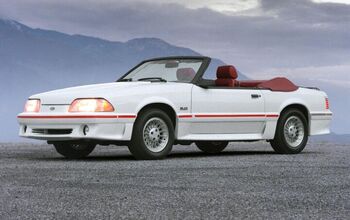Report: Manual Transmissions Have Grown In Popularity


The stick shift is dead. Long live the stick shift?
The stick shift has been declining for years now. Once a ubiquitous sight in cars of all shapes and sizes, now relegated to just a handful of declining models that are either super cheap or enthusiast specials. However, a recent report from WardsAuto shows that the take rate for manual transmission-equipped cars is up, and continues to rise. Not just for new vehicles, but used cars, too.
In the US, stick shifts only accounted for 0.9% of all delivered new vehicles in 2021. Yet, the number rose to 1.2% in 2022, and is now up to a record 1.7% for 2023. The used car side has seen similar jumps; dealership chain Carmax has reported a new high of 2.9% of its used cars sold, as equipped with a manual transmission. True, these numbers sound downright infinitesimal compared to the rest of the car market, but look at it this way: manual transmission cars have doubled their market share in about two years.
Why? Well, WardsAuto says that young people are responsible for the uptake. Maybe it’s nostalgia or the desire for a sporty car, but young people are finding their way into stick shifts.
With that said, it seems especially poorly timed for some automakers to drop their standard shift models, like the VW GTI. Automakers like Hyundai, Honda, Toyota, and Acura have committed to offering stick shifts in their popular sporty models. Given the fact that dealers are typically able to sell their stick sporty cars quickly, there may be an underserved market thirsty for more options.
Become an AutoGuide insider. Get the latest from the automotive world first by subscribing to our newsletter here.

Kevin has been obsessed with cars ever since he could talk. He even learned to read partially by learning and reading the makes and models on the back of cars, only fueling his obsession. Today, he is an automotive journalist and member of the Automotive Press Association. He is well-versed in electrification, hybrid cars, and vehicle maintenance.
More by Kevin Williams































Comments
Join the conversation
The manual transmission is one of the ways to avoid Planned Obsolescence from manufacturers? Years ago, the only car salesman I knew who went to high school with me, responded laughing, when I asked why Nissan eliminated the 4,5, or 6 speed automatic to their Sentra model. This was with their previous model, which looked different, unlike now, which looks like their Versa model. He said: " Is because, then, you will keep the car." "No, C.V.T." There are videos of people all over the Internet warning us against CVT's. I even see Toyota Corolla owners, of models of the 2014 to 2019 series, opening the hoods trying to figure out, what is that strange noise, even when parked, that is heard. No matter Toyota improved their CVT's with that launch gear, which means is an actual gear up to nearly 30 miles per hour and then it switches to CVT operation, the CVT does not have a fluid dipstick, at least at Toyota, and CVT's are known for fluid consumption, to the point mechanics say, it consumed 1,2 or 3 quarts when fluid is drained at the recommended intervals, something that accelerates premature wear. Is not as Do It Yourself friendly the drain and fill procedure of their fluid, no dipstick, is through the drain plug requiring a pump, no way to easily add fluid between changes as needed to keep the fluid level up. People like automatics, but not CVT's, the 2-3 miles per gallon extra benefit could be achieved driving better, keeping wheel and tires aligned and balanced, with correct tire pressure.
It is hard to figure out what buyers will do. They're kind of fickle. I think that all of this migration to SUVs will settle down.